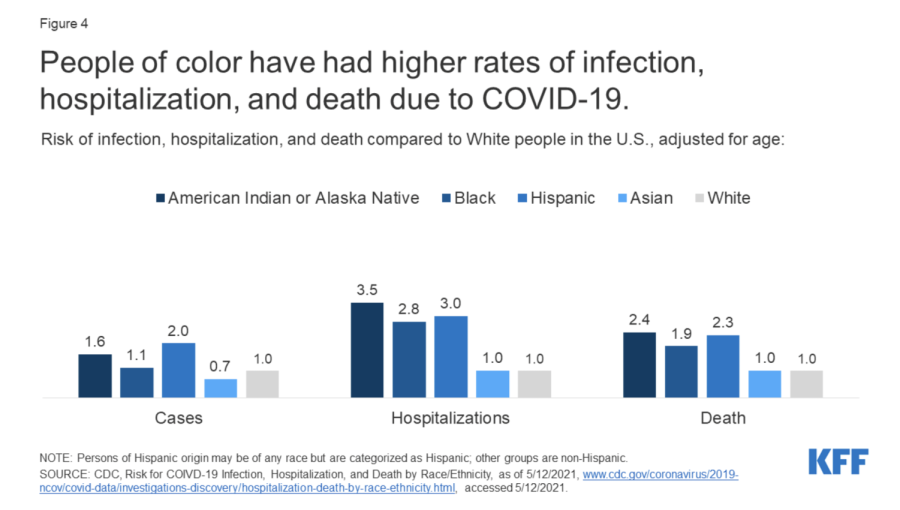Addressing the key components
April 11, 2023
People of color have had higher rates of infection, hospitalization, and death due to COVID-19.
Public health influences the population’s welfare and protects the community from diseases creating a safe environment for all. However, minority groups are negatively affected as they have limited access to healthcare compared to their white counterparts in the United States. The conditions people of color face refer to social determinants of health, which play vital roles in health inequities and result in poor health outcomes.
Healthcare disparities are often viewed through the lens of race.
Discriminatory practices in healthcare settings negatively impact mental and physical health, creating barriers to healthcare for many individuals. Because minorities are not receiving the highest level of treatment, their health outcomes will be much poorer than that of white individuals. Generally, insurance companies are responsible for providing comprehensive coverage.
For most individuals, insurance is provided through a place of employment. As a result of high unemployment rates among minority populations, many individuals are often left without insurance or a more limited policy. Systematic racism that contributes to economic instability, access to education, and physical environment drives health inequity.
According to Paula Braveman, a University of California Berkley researcher, health equity is when “all people have the opportunity to attain their full health potential, and no one is disadvantaged from achieving this potential because of their social position or other socially determined circumstance.”
After the Covid-19 pandemic, healthcare disparities amongst people of color have been exacerbated as a result of higher rates of illness and death among people of color, reflecting the increased risk of exposure to the virus due to pre-existing living, working, and transportation situations, increased risk of experiencing severe illness if infected due to higher rates of underlying health conditions, and increased barriers to testing and treatment due to existing disparities in access to health care.
Major platforms like the CDC should strive to increase awareness for health equity and create a safe environment for marginalized groups; governments and people should advocate for change to create a more inclusive environment.
